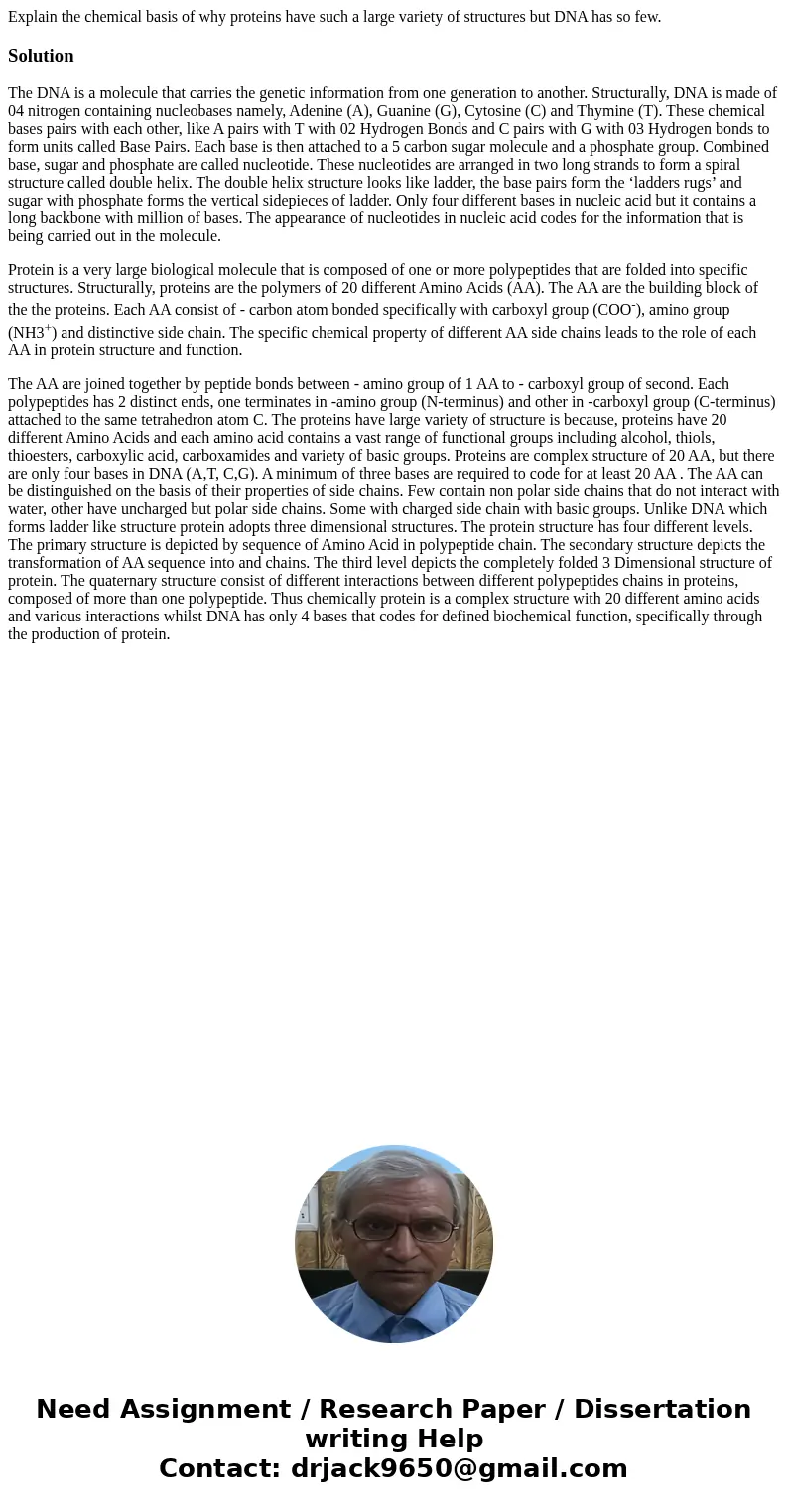Explain the chemical basis of why proteins have such a large
Solution
The DNA is a molecule that carries the genetic information from one generation to another. Structurally, DNA is made of 04 nitrogen containing nucleobases namely, Adenine (A), Guanine (G), Cytosine (C) and Thymine (T). These chemical bases pairs with each other, like A pairs with T with 02 Hydrogen Bonds and C pairs with G with 03 Hydrogen bonds to form units called Base Pairs. Each base is then attached to a 5 carbon sugar molecule and a phosphate group. Combined base, sugar and phosphate are called nucleotide. These nucleotides are arranged in two long strands to form a spiral structure called double helix. The double helix structure looks like ladder, the base pairs form the ‘ladders rugs’ and sugar with phosphate forms the vertical sidepieces of ladder. Only four different bases in nucleic acid but it contains a long backbone with million of bases. The appearance of nucleotides in nucleic acid codes for the information that is being carried out in the molecule.
Protein is a very large biological molecule that is composed of one or more polypeptides that are folded into specific structures. Structurally, proteins are the polymers of 20 different Amino Acids (AA). The AA are the building block of the the proteins. Each AA consist of - carbon atom bonded specifically with carboxyl group (COO-), amino group (NH3+) and distinctive side chain. The specific chemical property of different AA side chains leads to the role of each AA in protein structure and function.
The AA are joined together by peptide bonds between - amino group of 1 AA to - carboxyl group of second. Each polypeptides has 2 distinct ends, one terminates in -amino group (N-terminus) and other in -carboxyl group (C-terminus) attached to the same tetrahedron atom C. The proteins have large variety of structure is because, proteins have 20 different Amino Acids and each amino acid contains a vast range of functional groups including alcohol, thiols, thioesters, carboxylic acid, carboxamides and variety of basic groups. Proteins are complex structure of 20 AA, but there are only four bases in DNA (A,T, C,G). A minimum of three bases are required to code for at least 20 AA . The AA can be distinguished on the basis of their properties of side chains. Few contain non polar side chains that do not interact with water, other have uncharged but polar side chains. Some with charged side chain with basic groups. Unlike DNA which forms ladder like structure protein adopts three dimensional structures. The protein structure has four different levels. The primary structure is depicted by sequence of Amino Acid in polypeptide chain. The secondary structure depicts the transformation of AA sequence into and chains. The third level depicts the completely folded 3 Dimensional structure of protein. The quaternary structure consist of different interactions between different polypeptides chains in proteins, composed of more than one polypeptide. Thus chemically protein is a complex structure with 20 different amino acids and various interactions whilst DNA has only 4 bases that codes for defined biochemical function, specifically through the production of protein.

 Homework Sourse
Homework Sourse